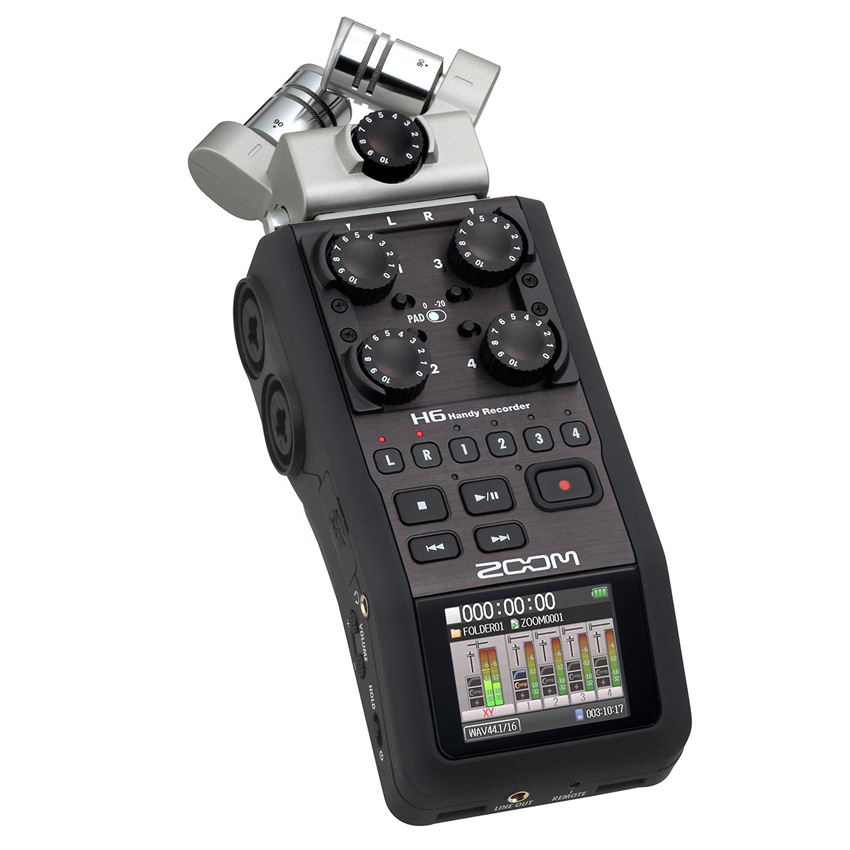
This weblog post is mainly about acquiring podcast equipment (purchasing) and software (downloading). Perhaps the best place to begin is with the generation of sound in and around the mouth. This results in the production of waves in the air that can be sensed by microphones. Here, it is an advantage if a microphone does not have a frequency range exceeding that of a human voice. Recorded noise will only have to be removed during the editing process. It is claimed that a range between 80 and 4 kHz, should be sufficient.
The next question has to do with the number of voices in a podcast. If there is a single voice, and if production takes place in a quiet environment, a single condenser microphone can be used. I have a Røde NT1 that can be used for this purpose. Only a fool would attempt to record more than four voices. These can be recorded separately, using dynamic microphones, for example Samson R21’s. Dynamic microphones require users to speak/ sing/ perform directly into the microphone, because these microphones will fail to pickup sounds, including noise, originating outside of a narrow cone. Condenser microphones should be avoided, because they will pick up everything and anything.
Not all podcasts can/ should be made in a studio. This means using a portable recorder. Computers are subject to software glitchs. In far too many programs, files are only saved at the end of an event. Thus, if a computer crashes prior to someone hitting save, that content is lost forever. This is why it is best to record everything on a recorder, even if the content is fed immediately into a computer.
The Zoom H6 Handy recorder is ideal for the field, powered by 4 x AA (rechargeable) batteries. On top of the recorder, there is space for one of four interchangeable input capsules: X/Y, Mid-side (both of which come with the recorder), shotgun, and a dual XLR/TRS combo input (available as accessories). These will probably be used more by videographers who will place the recorder on their camcorder hotshoe.
Podcasters will focus on the four XLR/TRS combo inputs on the sides of the recorders , each with its own preamp, gain knob, and phantom power switch. At the bottom there is a 2-inch color LCD (320 x 240 pixels) display. The H6 can use an SD card up to 128 GB. It has a USB 2.0 connector, line in and audio (headphone) out using 3.5 mm jacks.
One of the main reasons for acquiring this particular type of recorder is its operational characteristics. Once a channel is record-enabled, the H6 is constantly creating a 2-second buffer. If you hit Record late, it will still capture the 2 seconds prior to this. Clipping is always a potential problem in sound recording. Enabling backup-record duplicates tracks of the L/R inputsat 12dB lower than that set for input gain.
Headphones use drivers (miniature speakers) to create sound waves, that then enter the ear. Headphones used for podcasting should fully surround each ear, to prevent sound leakage. Today’s choice is a Samson SR950 enclosed reference headphone, that effectively insulates sounds. It has 50 mm drivers, reproduces sound both above and below the human hearing range (10Hz-30kHz) has a standard 32 ohm impedance, 2,5 m cable, and a 1/4″ jack adapter.
Software
Audacity is an open-source audio editor. While it has advanced features, such as multi-track editing and support for live recording, the user interface is simple. It supports the WAV and MP3 audio formats used on the Zoom H6.
Audacity allows cut and paste editing, has noise reduction and navigation control features. While I intend to use this on a dedicated Linux workstation, Audacity is available for Mac and Windows machines as well.
LMMS, previously Linux MultiMedia Studio, is another open-source audio editor software, that works on Windows, Mac and Linux machines. It offers a large number of features, including an FX (effects) mixer, automation editor, support for a MIDI keyboard, some in-built audio effects and instruments and compatibility with some popular standards in digital music production and editing. The user interface is more professional than that found on Audacity. It also offers a variety of plug-ins that can improve productivity. It is also better able to integrate music into a podcast, than Audacity is capable of.
The Future
Hopefully, in 2020 interested listeners will be able to enjoy the stories of Brigand Brewer, narrated by Claude Hopper. Somehow, the art work of Billi Sodd will also have to be included, and possibly the music of Wes Honeywell & the Thermostats. Some of the tales will feature Alice Angel, potter, vegetarian and philosopher, and other residents of Beef, Cascadia. These will probably be featured in a new blog, possibly titled: enigmata.mclellan.no


A reader commented to me privately about the lack of headphones for situations involving input from several “voices”.
Yes, every participant in a podcast should be equipped with a headphone. What I have not discovered is a suitable headphone amp(lifier) that can provide independent sound level/ volume adjustments for each headphone using 3.5 mm jacks.
There is a lot of equipment for 1/4″ jacks including Samson S-Amp and Samson QH4. Jack adapters could solve this problem. Yet, part of the challenge with field recording is to minimize not just the mass/ weight/ volume of equipment, but also the number of pieces.
Perhaps the greatest challenge is to ensure that equipment doesn’t introduce more noise, or reduce signal levels.